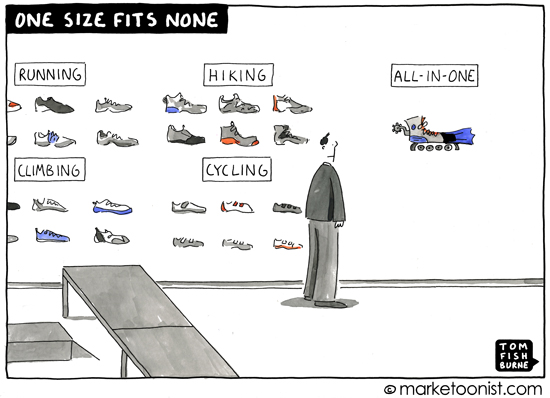Frustration with Women’s Sizing
I have always hated fitting rooms. It’s not the fact that mirrors in these dressing rooms trick me into thinking I am skinnier. What I hate, is that I actually have to go into those fitting rooms in the first place, just to see whether my unique body type can fit into a certain size. It’s embarrassing enough having to ask a sales worker or my mom for some help, as if it is my fault that I am not short or tall enough or that I am too big or too skinny. However, I am not alone.
Women’s sizing system suffers from size inflation, which started as a marketing strategy to make women “feel skinnier,” in order to just sell more products. This random sizing makes the numbers on clothes more ambiguous. The rise of so called vanity sizing, which is generally defined as the practice of labeling clothing with sizes smaller than the item’s measurements and industry standards would indicate, has also rendered most sizing meaningless.
For example, Oprah Whitfrey was a size 8 in 1995. However, in modern times she is now a size 6. This gap in numbering demonstrates how confusing and frustrating women’s sizing system truly is.
The constant question of “what size are you,” is loaded enough. As most Americans have grown physically larger, brands have shifted their metrics to make shoppers feel “skinnier.” So much that a women’s size 12 is now a women’s size 6. Those numbers are just as confusing as a women’s size 6 waistband also varying among stores.
Modern fashion clearly has a problem. While it rarely affects men, whose shirts and jeans rarely have bare honest measurements, it mainly affects women. Not only because women have more clothing options but also because women get inspected more often on what we wear. Whether that is something too slutty, too unfashionable, or too pricey, we constantly get judged.
The constant emotional debate, especially right now, is when so many shoppers are rejecting labels of all kinds, from gender norm clothes to size. They’re turning away from stores like Victoria’s Secret that markets one way to be sexy, while demanding that stores like Forever 21 and Brandy Melville carry more varying sizing. Even some celebrities like Beyonce and Melissa McCarthy are calling out high-fashion designers for ignoring millions of people with curves.
So are we close to solving this crisis? Yes and no. Some brands like Aerie are taking steps in the right direction, cutting chaos from the internet shopping to offer clear, actionable intel. But even if sizing becomes inclusive and transparent we, the shoppers, will not always like what we see in the mirror. The fashion industry can’t constantly change because of how we choose to feel about ourselves, and often it may drive us crazy. That’s why I have always hated fitting rooms, until I find something that I love.








